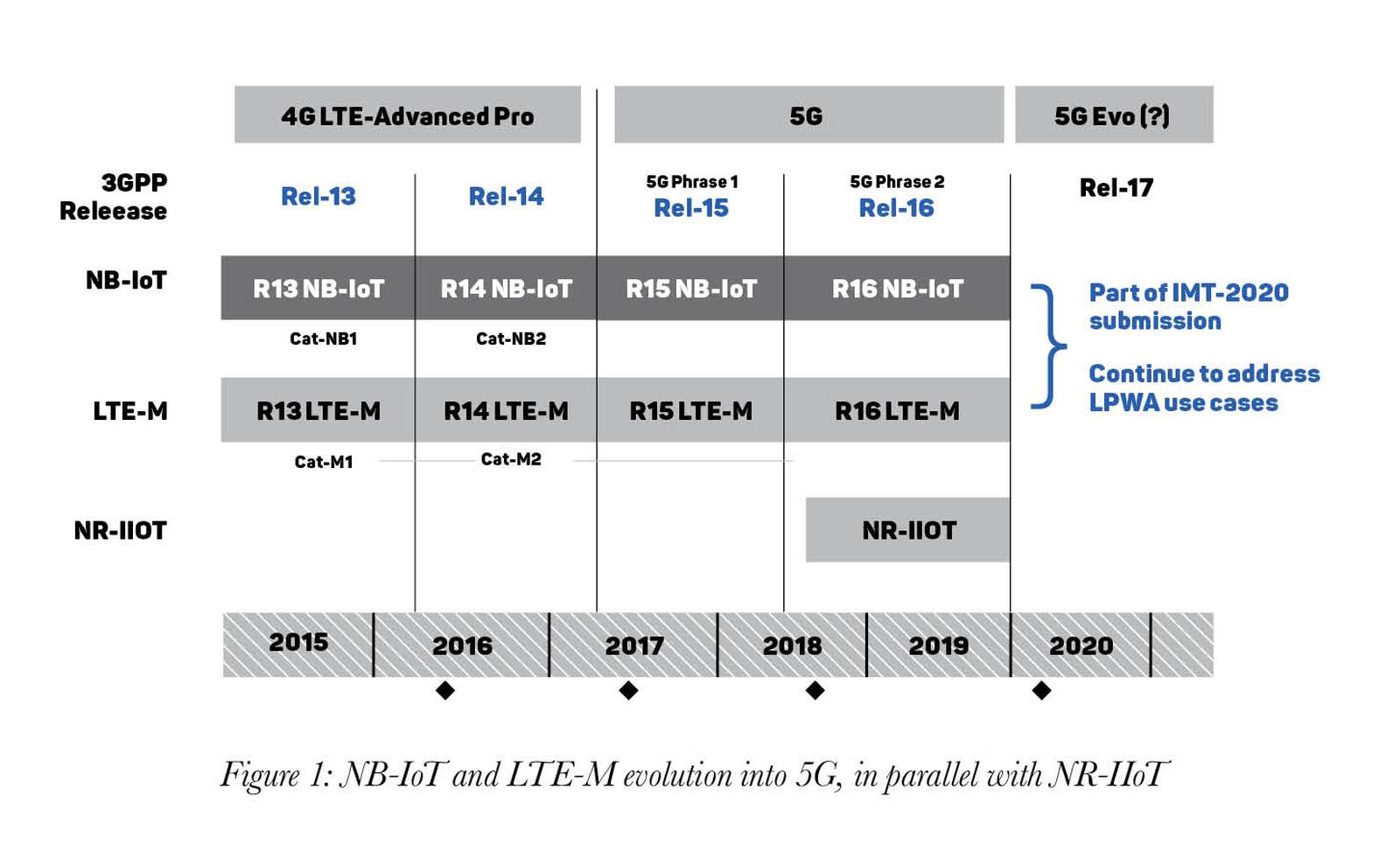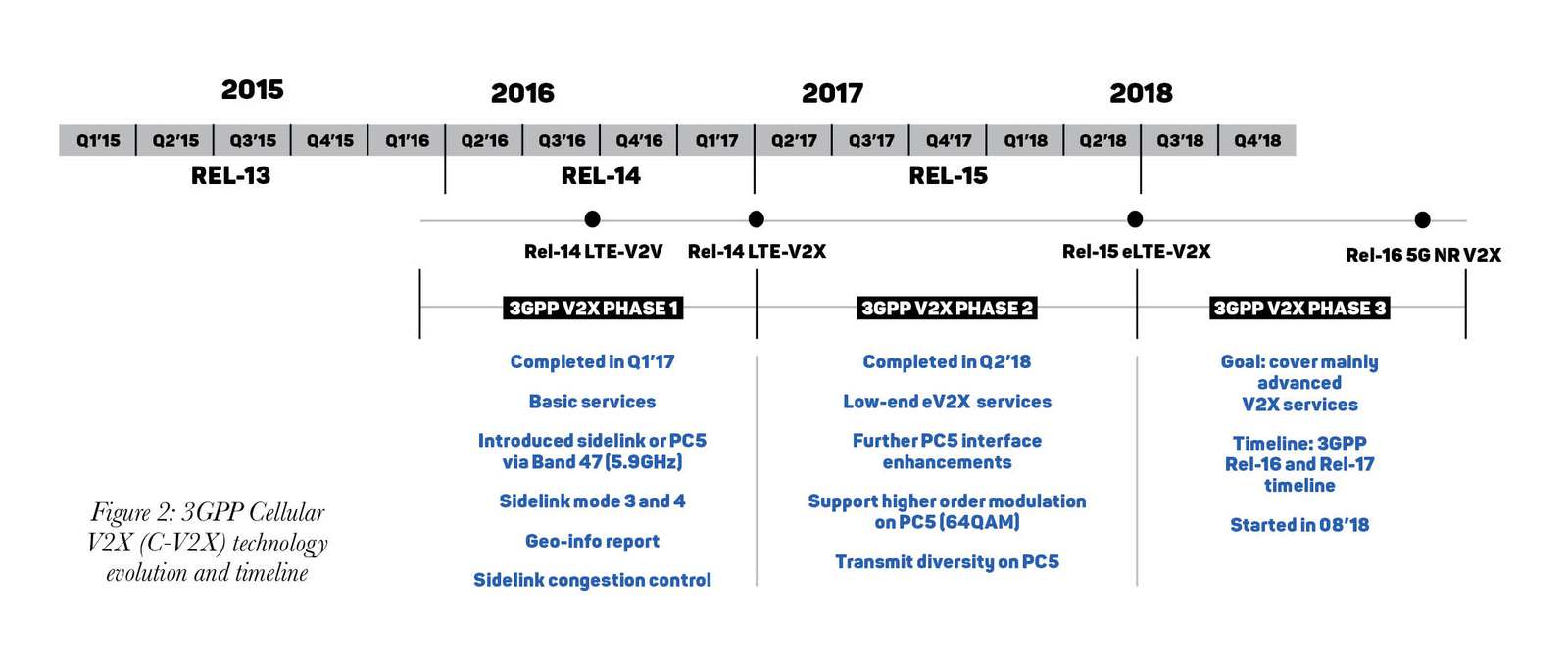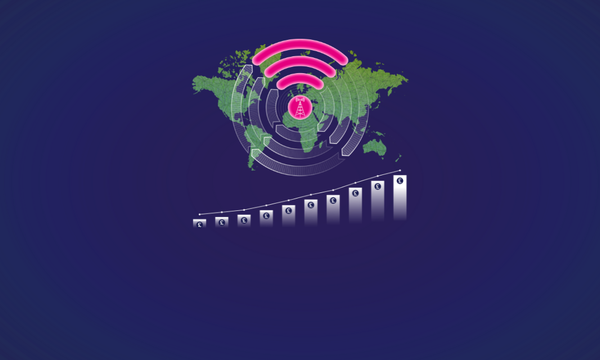
IoT In The 5G Era
This article is from the CW Journal archive.
Back in June 2018, the whole 5G ecosystem reached yet another significant milestone when 3GPP approved a new set of radio specifications for 5G NR Standalone (SA) in RAN#80 in La Jolla, California. This marked the completion of the radio specifications for 5G NR Phase 1 (3GPP Release 15), a major step towards 5G commercialisation.
I have often been asked what 5G could possibly be doing for low power wide area (LPWA) technologies. Isn't 5G designed for power hungry high speed, low latency applications? Aren't the technological solutions like NB-IoT (Narrowband-Internet of Things) and LTE-M, specified in 4G, already addressing LPWA? What else could possibly be done for IoT in the 5G era?
A look at 5G's relationship with NB-IoT and LTE-M helps to answer these questions.
|
GET CW JOURNAL ARTICLES STRAIGHT TO YOUR INBOX Subscribe now |
The general principle is that, for technology solutions specified in any Standards Development Organisations (SDOs) to be qualified as International Telecommunication Union (ITU) IMT-2020 minimum requirements after evaluations. Nowadays however, 5G has been used in a much wider context, referring to a wide range of new services to be enabled by future wireless technologies.
ITU members have outlined minimum technical performance requirements for 5G IoT and massive machine time communications (5G mMTC): at least 10 years' device battery life (15 years preferred), 20 dB coverage enhancement, and support for a million devices per square kilometre.
3GPP informed ITU early this year that it will submit both NB-IoT and LTE-M technologies as candidate 5G solutions to meet the IMT-2020 5G mMTC requirements. So both technologies are expected to become vital 5G components. In addition, a decision was made to ensure that LPWA use cases would continue to be addressed by evolving NB-IoT and LTE-M as part of the 5G specifications, thereby confirming the status of both NB-IoT and LTE-M as 5G standards.
There are two main drivers for this decision: investment payback and longevity of installed LPWA devices. The first reason is for the industry to leverage and maximise their LPWA investments already made today globally. More than 60 commercial LPWA networks have already been launched worldwide, according to GSMA. Therefore there are interests to maximise the longevity of the networks, infrastructures and devices.
The second reason is that most LPWA devices are expected to last for more than 10 years and may be deployed in hostile locations, such as down manholes (for water metering), in remote locations (for alarms or environmental monitoring), or in the chassis of vehicles (security alarms), and in smart agriculture. It is therefore crucial to support LPWA devices in 5G core networks to ensure a long IoT service life. To enable that, 3GPP is investigating options as part of Release 16 for the 5G core network to support NB-IoT and LTE-M radio access networks, as well as to ensure that NB-IoT and LTE-M can coexist with NR in the 5G NR frequency bands, including for example the flexibility of deploying NB-IoT and LTE-M inside an NR carrier. This will enable a smoother migration path to 5G for the LPWA devices deployed today with only a software upgrade in the future, if needed. This again confirms the longer term status of both NB-IoT and LTE-M as part of 5G standards.

The focus use case for the first phase of 5G NR was about enhanced mobile broadband, although it has added certain features to avoid collision between NR and LTE-M orNB-IoT, such as subcarrier grid alignment (for both uplink and downlink), reserved resource configuration and flexible scheduling units. 5G NR Phase 2 (Release 16), however, will bring connectivity solutions to a variety of verticals, including industrial, manufacturing, automotive and satellite sectors. Most of these demand stringent requirements such as high throughput, high reliability, low latency, high availability, and dense connectivity. 5G NR Phase 2 is focused on mMTC and URLLC (Ultra-Reliable Low Latency Communications).
If we look at 3GPP TS 22.261 and TS 22.804, it is evident there are many different use cases supported with a wide variety of different requirements and key performance indicators.
One particular example is the Factory of the Future use case, revolutionising the way goods are produced, shipped and serviced throughout their whole lifecycle. Leveraging wireless connectivity to provide the degree of flexibility, mobility, versatility and ergonomics required is crucial and one of the important use cases in designing NR-IIoT in Release 16.
NR-IIoT (New Radio Industrial IoT) is a new feature to be studied in 3GPP to enable new IIoT use cases, particularly for factory automation, electrical power distribution, and in the transport industry. The new system will leverage short transmission time interval (TTI) structures for low latency as well as methods for improved reliability defined in Release 15 URLLC. Time Sensitive Networking (TSN) will enable key services needed in factory automations, including time synchronisation and accurate reference timing. Both FR1 (Frequency Range 1, 450 MHz to 6 GHz) and FR2 (24.25 GHz to 52.6 GHz) will be considered.
In addition, the telecoms industry is keen to expand the platform for the automotive industry, providing connectivitysolutions for V2X (vehicle-to-everything: vehicle-to-vehicle, vehicle-to-infrastructure, vehicle-to-network, vehicle-to-pedestrian) on Band 47 (5.9 GHz) and beyond. Initial standards on supporting basic V2X services (not safety critical) were completed in Releases 14 and 15. In the 5G era, it is expected to focus on advanced use cases including vehicles platooning, extended sensors, advanced and remote driving. These all require stringent performance in terms of reliability, latency and availability. 3GPP is currently looking at this in the NR-V2X study.

NB-IoT and LTE-M were introduced in Release 13, which provided the essential and fundamental narrowband air interface for ultra-low complexity LPWA devices. It allows devices to be connected to a network in massive numbers in extremely challenging coverage while having a very long battery life. Several enhancements and additional features were added in Releases 14 and 15.
Release 14 was about power consumption reduction (the introduction of Release Assistance Indicator, for example) and use case extension. For the latter, additional features were added including support for positioning, multicast, connected mode mobility, higher data rate, and support for User Equipment (UE) power class 6 (14 dBm) to enable use of small form-factor batteries with limited peak-current capability.
Common features for NB-IoT and LTE-M in Release 15 include further latency and power consumption reductions (in the form of NWUS and MWUS, the wake-up signals for NB-IoT and LTE-M respectively), and further system acquisition time reduction. NB-IoT also added Time Division Duplex (TDD) and support for small cell.
The ongoing Release 16 work for NB-IoT and LTE-M is about network operation and efficiency improvements (for example, UE-group wake-up signal), as well as preparing for a smoother migration to 5G core networks.
As the technologies for IoT expand in the next few years, more devices will join the list of 'things' forming new IoT ecosystems in the verticals. NB-IoT and LTE-M technology will continue to play a vital role in the 5G era.
In addition to this, it will be crucial to leverage wireless connectivity to provide the degree of flexibility, mobility, versatility and ergonomics that is required to meet the requirements of the Factory of the Future and the demands of connected, autonomous vehicles. All of this will provide an important step in showcasing the full potential of 5G technologies in the 5G Internet of Things era.
|
GET INVOLVED WITH THE CW JOURNAL & OTHER CW ACTIVITIES |
Sylvia Lu is an award-winning Chartered Engineer and Non-Executive Director. Sylvia has over 15 years of experience in the Telecom industry for four mobile generations with chipset vendors, currently with u-blox at the Corporate Strategy group – a Swiss vendor of positioning and wireless communication chipset, modules, and services.
Sylvia serves on several national and global industry Boards: she is an elected board director of CW (Cambridge Wireless), and serves on the Advisory Board of UKTIN, which provides independent advice on the telecoms sector, champions the opportunities in telecoms research, development, and innovation for the UK, and helps UKTIN provide impartial input to government. She also serves on the Board of 5G-ACIA (5G Alliance for Connected Industries and Automation), and joins forces with global industry stakeholders to influence 5G development and deployment in line with industrial imperatives to accelerate Industry 4.0.
She holds a first-class Electronic Engineering degree from Birmingham University and a Master of Science degree in Communications and Signal Processing from the University of Bristol. She graduated with a Distinction from the University of Oxford in PGDip Strategy & Innovation, and an Executive MBA degree from the University of Cambridge. Sylvia is also an artist.











